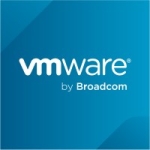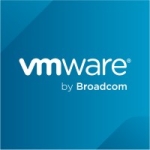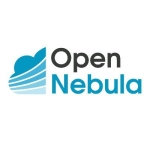What is most valuable?
The biggest value I'm getting out of VMTurbo right now is the complete hands-off management of equalizing the usage in my data center. VMTurbo distributes all of my VMs equally across all of my hosts. I don't ever have to think about when a host is in more heavy use if there's going to be constrain on that single host that it lives on, because it rearranges everything for me through VMotion control.
How has it helped my organization?
The big benefits for me is a lot of time savings. I don't have to care and feed for each individual VM, and make sure that the environment's balanced just the right way. Also, I'm able to see which of my applications are taking more cycles, more compute cycles and RAM usage. I really can understand my environment a little bit better.
What needs improvement?
The one point is the reporting. We do have reports out of it, but they're not the level of graphical detail I would like.
One of the reasons we went with VMTurbo was because we wanted to replace vCOPS. We weren't getting the level of granularity and alerting out of vCOPS to really understand our individual VMs, but VMTurbo, I think, could do a little bit better job on reporting. I would love to use them in our monthly metrics meetings to really show in a very nice graphical way how our environment's growing, how many VMs did we grow from one month to the next. They have some reporting features that we could have a little bit better for us.
What do I think about the stability of the solution?
VMTurbo has been very stable for us. I can't actually recall an instance where it's crashed on us. We have rebooted it, and it comes right back up, and continues right where we left off, and continues to manage our infrastructure.
What do I think about the scalability of the solution?
We started out with VMTurbo in our development and test data center managing over 400 virtual machines. The same instance now manages our entire production data center with our SaaS platform that all of our customers connect to. I didn't have to change anything. The virtual appliance handled it without breaking a sweat.
How are customer service and technical support?
I had a question that came up, and I didn't know how to do something which was how to get very detailed application load on a particular server. I called in to the support, talked to the support gentleman, and he helped me get to the bottom of it. We actually even leveraged their development resources. He got them on the call with me, and so I was able to easily and quickly talk to tier III or even development support directly as a customer.
Which solution did I use previously and why did I switch?
We have some specific instances come up where vCOPS was making recommendations on something like a SQL server. It said, "Hey, you only need 12 megabytes of RAM or 100 megabytes of RAM for the SQL server." Even old OS's just can't run with that low amount of memory. VMTurbo when we looked at it, we understood that it was going to make better recommendations. So far, that's been the case. We've been able to fully automate the distribution of our VMs among our hosts, where vCOPS and DRS really weren't doing the right job for us. They were creating imbalanced hosts. Some hosts would get overloaded, and we've ran into big problems.
What about the implementation team?
It was very easy because it's a virtual appliance. We were able to download it into our network, connect it to vSphere, and within a few minutes of scanning our environment, it was able to plug in and connect to all of our VMs, and manage them for us.
I was still having to babysit a lot of the VMotion requirements for my environment. I was having to move things around manually. VMTurbo has promised, and the promise they delivered on was no more manual VMotions for eight months. That's been a huge time saver for me, and I can trust it to take care of my environment.
What's my experience with pricing, setup cost, and licensing?
Price is a big one. VMTurbo was very competitively priced. We also were able to get additional modules that helped us with our specific needs without much more costs.
Which other solutions did I evaluate?
Actually no. We were looking for a specific need, and I really hadn't seen anybody else out there besides what vCOPS said they could do to deliver automatic load balancing of virtual machines as well as right sizing VMs automatically, and I don't know anybody else out there doing that same thing.
What other advice do I have?
I would say if you have a VMware environment that you are having to spend almost any time load balancing and VMotioning your machines, you're going to need VMTurbo. If you have constrained resources, if you have a limited budget on how many hosts you can buy, you're going to need something like VMTurbo to make sure that the applications that need CPU and RAM are getting it, and the ones that don't are resized so that you can get those resources back.
In reviewing it, we really like to get hands on. We engaged a lot of times through the VMware user group. We get sponsors out to those meetings. We can talk to them face to face. We also talked to our co-members, and find out what they're using and see what kind of results they've had. We've only heard nothing but good things from VMTurbo.
Disclosure: PeerSpot contacted the reviewer to collect the review and to validate authenticity. The reviewer was referred by the vendor, but the review is not subject to editing or approval by the vendor.


















It is a great product for sure. I use it for vMotion automation but everything else is just recommend due to our stringent change rules to Production servers which require a Change Request to be filed and approved.